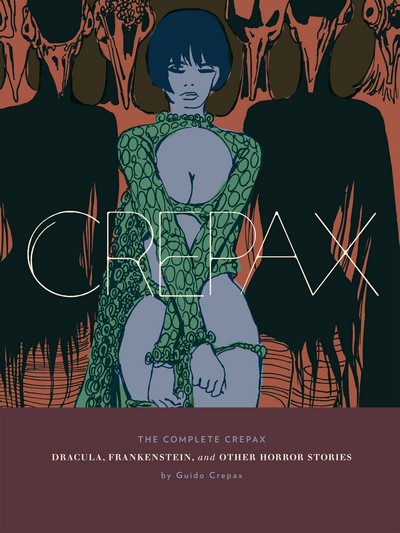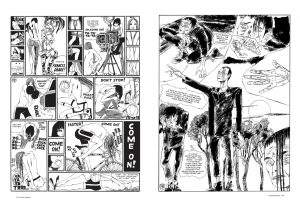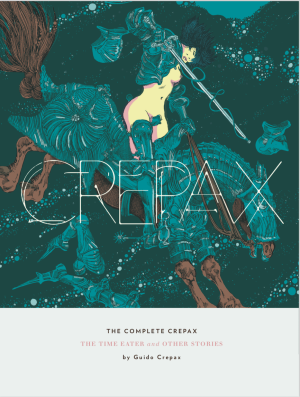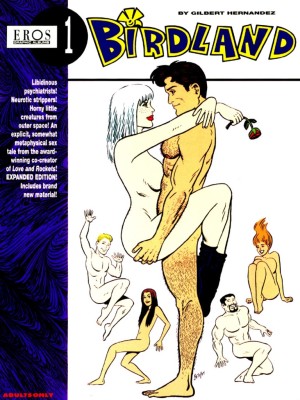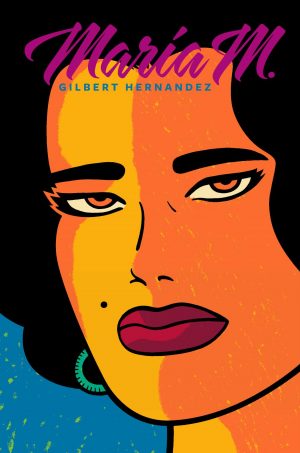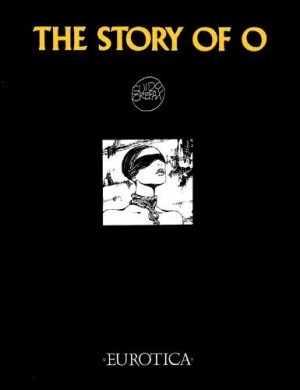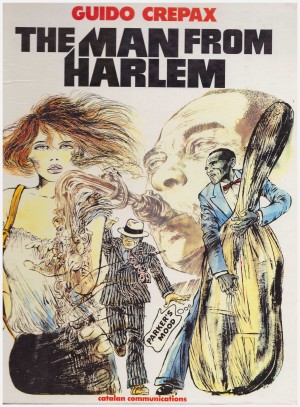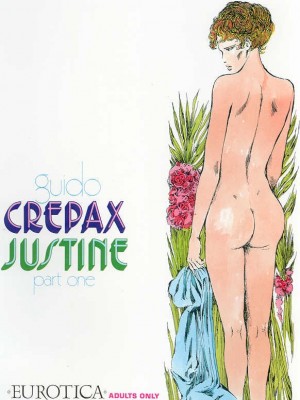Review by Graham Johnstone
Guido Crepax is acclaimed for his artwork, but controversial for his erotic content. Perhaps that’s why his work has only been erratically published in English, and it took fifty years for this first volume of The Complete Crepax. His artistic brilliance was clear from foreign language editions, but now we can begin to appreciate his work as a whole.
Publisher Fantagraphics and series editor Manuel Espírito Santo opt for a thematic, rather than purely chronological approach. This volume is subtitled ‘horror stories’, but actually begins with retro science fiction, and takes in social observation, as well as Crepax’s signature erotica. The result is a welcome overview of the Italian maestro’s ‘body’ of work, with examples from the beginning, middle, and end of his career.
A first glance through this suitably luxurious hardback confirms Crepax’ reputation as an artist. He trained as an architect, and initially worked as an illustrator and designer, so his excellent draughtsmanship and design sense are no surprise. However, his mastery of sequential storytelling is astounding, even in these earliest pages. His montage effects predate Steranko’s, and he juxtaposes splash panels with clusters of micro-panels decades before Chris Ware. Crepax’s rendering is immaculate, and now colour is the norm, refreshingly complete in black and white. Every page is an almost musical composition of line weights, shapes, textures and blank space. Crepax’s pages are as beautiful as his heroine Valentina.
However, his 1970s shift to inexpressive technical pens feels misplaced, sacrificing the tactility of pressure-sensitive ‘dip’ pens, and so undermining the essential sensuality of a 1970s Valentina episode. Over the sixty pages of Frankenstein (1999), Crepax turns the limitations of his physical deterioration (through Multiple Sclerosis) into a rougher, murkier style, that fits the mood. It’s as far as possible (featured image, right) from his Valentina artwork, yet distinctively Crepax. For Dracula (1986), he turns the fine lines of his technical pens into a stylish update on period engravings. Visualising another’s story prompts both brilliant and routine pages, but demonstrates range. Memorable images include a woman seen through a ghostly bat’s wing. His Nosferatu style depiction of the Count, though, proves oddly comical, yet hardly distracts from the finest art here.
Crepax writes what he wants to draw, from the underground cities and astrological creatures in ‘The Subteranneans,’ to the cavalrymen of ‘The Hussars’. He’s an entertaining writer, with something of Jack Kirby’s restless invention, albeit without the latter’s narrative drive. These stories are best enjoyed as improvised travelogues of imagined and historic worlds. The focus shifts from imagined worlds to the reimagined world of the 1960s, with the Subterraneans amongst it, driving plots. ‘Subconscious Valentina’ from 1976 (perhaps included here for it’s allusions to ‘The Subterraneans’), feels like the jaded end of that era. Its fetishistic fantasies feel formulaic, and the briefly fashionable technical-pen rendering also betrays its age.
The two adaptations are surprisingly faithful. The explicit content of his Dracula, is credibly rooted in the sexual (and bondage) subtext of the original, while Frankenstein adding an (imagined) image implying sexual violence also feels true to the source material. Crepax plays to his artistic strengths, opening Dracula with the women (Mina worrying about Lucy’s ‘drained’ condition), and only later feeding in the backstory of Jonathan Harker at Castle Dracula. The climactic chase through Europe offers the book’s most gripping pages. Each adaptation might have been improved by culling some plot mechanics and secondary characters, but these are groundbreaking and enduringly powerful adaptations.
This is an excellent overview of a brilliant artist/engaging writer, and a gentle entry into his controversial erotic world.
